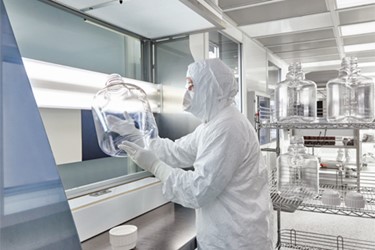When Clean Is Critical—The Importance Of Understanding The Parameters And Definitions Of Clean

Working within a critical environment such as a clean room necessitates high-quality materials and equipment. Even microscopic amounts of foreign material can render batches or materials unusable, resulting in wasted time and money. It is therefore essential that products used in critical environments, such as plastic bottles, vials, carboys, caps, and other materials conform to the accepted standards of cleanliness; it’s important to reduce the possibility that there is anything in your containers other than the formulations that you’ve added.
To provide products that meet the needs of the applications, materials and consumables must conform to a variety of specified standards. These might include achieving a required low level of particulates, or sterility assurance levels (SALs) that reach or even exceed USP standards. For example, USP <788>, “Particulate Matter in Injections,”, sets the limits of particulates in a final product— specifically for injections and parenteral infusions—yet may still be inappropriate for the consumables used to produce these products, which all contribute to that particle load. Manufacturers may wish to consider setting their own acceptance standards below those laid out in USP <788>, in order to provide an enhanced level of service.
When considering which containers or equipment to use in a critical environment, there are a number of considerations to bear in mind:
- Do you have sufficient time, financial resources, and expertise internally to produce containers and other materials that conform to the required levels of cleanliness? Or would relying upon a third party be more efficient?
- Do you need product or process validation? Or do you need something in between? Are you aware of the differences between validating your product vs. the equipment on which it is processed?
- Have you established the precise levels of cleanliness your critical environment requires, and fully understood the options or limitations specific to these clean parameters?
Having answers to these questions requires a comprehensive understanding of precisely how clean parameters are defined and validated.
Get unlimited access to:
Enter your credentials below to log in. Not yet a member of Pharmaceutical Online? Subscribe today.
